Lester Piggott: child prodigy who blossomed into a riding legend and statesman
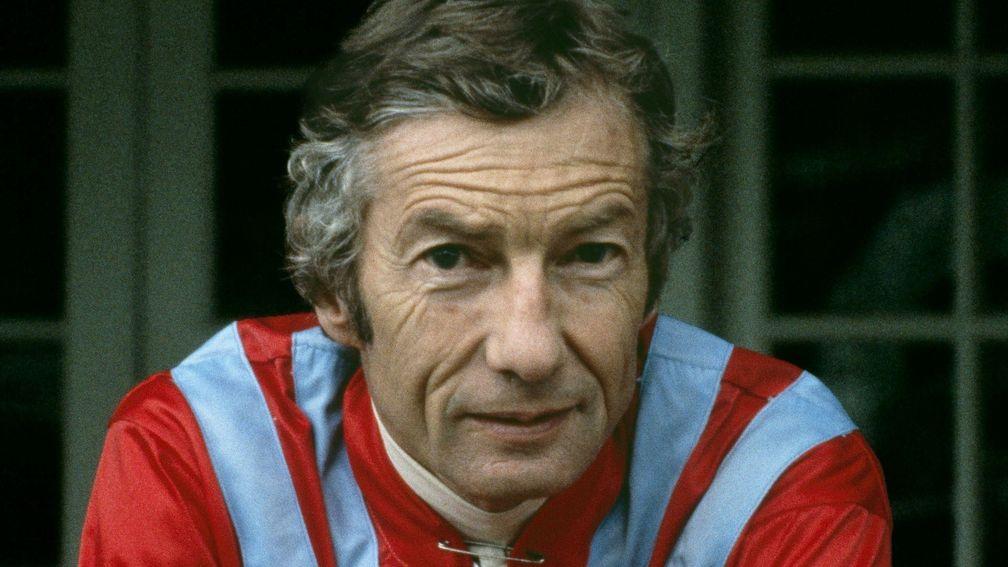
Lester Keith Piggott was born in the local hospital in Wantage, Berkshire on November 5, 1935, with a racing pedigree that extended back to the 18th century.
His father, Keith Piggott, rode the 1939 Champion Hurdle winner African Sister and became champion trainer of jumpers in 1962-63 thanks to his Grand National victory with Ayala, whom Lester himself schooled at home.
Keith's father, Ernie Piggott, was champion jump jockey three times and also won the Grand National three times. Ernie's wife, Margaret, was a daughter of the great Victorian jockey Tom Cannon and his wife Kate, who was from the notable Day family of Danebury.
Lester's mother was born Iris Rickaby and her father, Fred Rickaby senior, won three Classics as a jockey.
Piggott was an only child, and his solitary nature was reinforced by his partial deafness. He learned to lip-read and was comfortable in one-to-one conversations but his speech was always indistinct, especially with its nasal intonation.
He had more rapport with horses than with people, and rode almost as soon as he could walk. The family lived at Letcombe Regis until moving in 1945 to Lambourn.
Lester Piggott, legendary jockey and nine-time Derby winner, dies aged 86
He rode racehorses at home from the age of eight and was 12 when riding in a race for the first time, on three-year-old filly The Chase in an apprentice event at Salisbury in April 1948.
The pair finished unplaced but on his seventh ride he partnered her in the Wigan Lane Selling Handicap at Haydock on August 18; having weighed out at 6st 9lb, the baby-faced rider defeated senior jockeys. It transpired that the runner-up was a non-trier.
1950s: Rising star
Piggott's father instilled into him the idea that winning was the only thing that mattered, and he incurred several suspensions early in his career as a result of youthful impetuosity. Nevertheless, in 1950 he gained the first of three consecutive apprentice championships.
The following season the 15-year-old prodigy scored his first top-level victory, on the French-trained Mystery in the Eclipse, and was runner-up on Zucchero in the inaugural King George VI and Queen Elizabeth Stakes.
He was a close second on Gay Time in the Derby and King George in 1952, and in his first season as a senior jockey, 1953, Zucchero became his first champion as the wayward but brilliant five-year-old took the Coronation Cup.
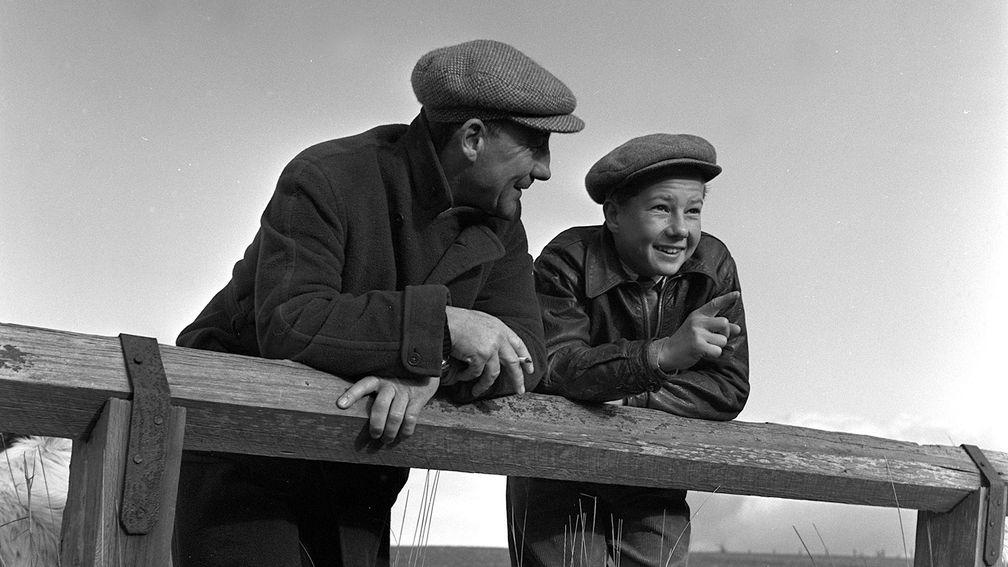
Increasing weight caused him to start riding over hurdles, and in 1954 he won the Triumph Hurdle at Hurst Park on Prince Charlemagne.
Three months later, still aged only 18, he scored his first Classic victory, on 33-1 shot Never Say Die in the Derby as the third-choice jockey. The Joe Lawson-trained US-bred led two furlongs out and won smoothly by two lengths.
Never Say Die finished only fourth in the King Edward VII Stakes, which was a rough affair for which Piggott received a suspension. The racing authorities were gunning for him, feeling that his will to win was degenerating into recklessness.
But his talent could not be denied and he was appointed successor to the retiring Sir Gordon Richards as stable jockey to Noel Murless in 1955. Murless was based at Warren Place, Newmarket, and so began Piggott's association with the yard that spanned 30 years.
His first great champion, the fragile Crepello, had only two outings in 1957 but they produced victories in the 2,000 Guineas and Derby; at Epsom he beat Ballymoss by a length and a half.
Two days later Piggott completed the Epsom Classic double for the only time when Carrozza became the his sole Classic winner for the Queen. The happy owner led the filly in.
Right Boy blossomed into the best sprinter he ever rode, and in both 1958 and 1959 the grey won the Cork and Orrery (now Platinum Jubilee) Stakes, July Cup and Nunthorpe Stakes.
But 1959 was primarily the year of Petite Etoile. He opted for another Murless filly when she won the 1,000 Guineas but did not repeat that mistake in the Oaks, in which she produced a dazzling turn of speed to triumph by three lengths. Prince Aly Khan's grey then won the Sussex Stakes, Yorkshire Oaks and Champion Stakes.
Piggott had continued to ride sporadically over hurdles but scored the last of his 20 wins in that sphere in February 1959. By that time his iron self-discipline had solved the problem of keeping his body up to two stone below its natural weight in order to ride on the Flat.
1960s: Multiple champion
Piggott married Susan, daughter of trainer Sam Armstrong, in February 1960 and the couple made their home in Newmarket. Susan Piggott became a successful bloodstock agent and they had two children – Maureen, the wife of trainer William Haggas, and Tracy, a TV sports presenter in Ireland.
As well as marriage, 1960 brought him his first championship, highlighted by the exploits of Petite Etoile and St Paddy.
Petite Etoile cantered home in the Coronation Cup but suffered a controversial defeat in the King George, as Piggott gave the odds-on favourite plenty to do and she failed to catch Aggressor. Stablemate St Paddy (like Crepello, owned by Sir Victor Sassoon) won both the Derby and the St Leger by three lengths.
In 1961 Petite Etoile won her second Coronation Cup, St Paddy led all the way in the Eclipse, and the Warren Place team also won the St Leger with Aurelius, although Piggott lost his title to Scobie Breasley.
In September 1964 he suffered a hairline fracture of the skull and severe concussion in a fall at Longchamp. The injury caused him blinding headaches for years and his return to the saddle was much faster than was prudent, but it did enable him to regain the title for the first of eight consecutive championships.
The Paddy Prendergast-trained Meadow Court came second in the 1965 Derby to supreme champion Sea-Bird, took the Irish Derby and became his first winner of the King George.
He chose not to renew his retainer with Murless in 1966. In the Oaks he opted for the Vincent O'Brien-trained favourite, Valoris, who won, although the split with Murless was soon papered over and he partnered reigning champion filly Aunt Edith to victory in the King George.
He was champion again with his best domestic score of 191, but Murless wanted a retained jockey and signed up Australian George Moore.
When Murless and Moore won the first three Classics of 1967 it seemed that Piggott had blundered in going freelance, especially when Royal Palace beat his mount Ribocco into second place in the Derby.
However, Ribocco beat Murless horses into second in both the Irish Derby and the St Leger, and Piggott retained his title. He left Murless a year too soon but his decision was justified in the long term.
He partnered the Vincent O'Brien-trained Sir Ivor to decisive victories in the 1968 2,000 Guineas and Derby, but Raymond Guest's colt lost his next four races.
He himself beat Sir Ivor in the Irish Derby. Riding Ribero, he scored a shock victory from the 1-3 favourite, who was ridden by Liam Ward, O'Brien's jockey in Ireland. Reunited with Piggott, Sir Ivor was third in the Eclipse and second in the Prix de l'Arc de Triomphe, outclassed by Vaguely Noble, but bounced back to win the Champion Stakes and Washington DC International.
Ribero, like his brother Ribocco, was a temperamental son of Ribot and completed the same Classic double. In the St Leger, Piggott used supreme finesse to coax him home by a short head.
Washington DC International winner Karabas and the mare Park Top, both trained by Bernard van Cutsem, were his top older horses of 1969. He delivered Park Top's late run successfully in the Coronation Cup and King George, but in the Arc her flying finish came too late to catch Levmoss.
The race after the Arc was the Prix du Moulin and he won it on Habitat. That champion three-year-old and champion miler was, like Ribocco, Ribero and top juvenile Ribofilio, trained by Fulke Johnson Houghton for US platinum tycoon Charles Engelhard. Another of Engelhard's colts, the Vincent O'Brien-trained Nijinsky, was the champion two-year-old.
1970s: Leader of his profession
Nijinsky, the Triple Crown winner of 1970, was the greatest champion Piggott ever rode.
The Canadian-bred son of Northern Dancer romped away with the 2,000 Guineas, and in the Derby showed a majestic turn of foot to trounce top-class French colts Gyr and Stintino.
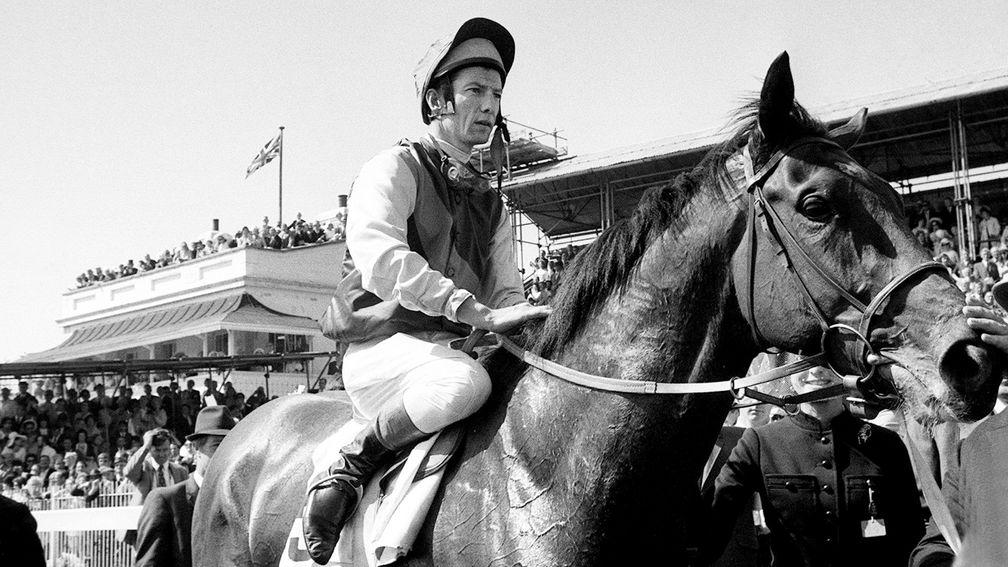
Nijinsky won the Irish Derby under Liam Ward, who rode him in all his races in Ireland (Piggott was second on Meadowville), and in the King George he needed to race for only a few strides. He achieved immortal fame when victory in the St Leger made him the 15th colt to win the Triple Crown, and the first since Bahram in 1935.
When Nijinsky lost his unbeaten record in the Prix de l'Arc de Triomphe it was the most controversial defeat of Piggott's career. Having been given plenty to do, the hot favourite made rapid progress to head Sassafras well inside the final furlong but, under strong pressure for the first time in his life, he edged left and Sassafras rallied to prevail by a head.
In the Champion Stakes 13 days later, Nijinsky came second to Lorenzaccio. He had never fully recovered from a severe attack of ringworm before the St Leger.
Piggott won four of the five domestic Classics that year, as he came home seven lengths clear on Humble Duty in the 1,000 Guineas. He also won France's four biggest juvenile races on My Swallow.
In 1971 he led all the way on Athens Wood in the St Leger and was champion jockey for the ninth time but, in effect, he then abdicated. For a jockey whose priority was big-race success around the world, it was no longer worth chasing a title based on the number of wins in Britain.
Roberto, trained by Vincent O'Brien, was scheduled to be ridden by Bill Williamson in the 1972 Derby but the Australian was jocked off the favourite in favour of Piggott by owner John Galbreath.
That unpopular decision was vindicated when Piggott scored a record-equalling sixth Derby victory with the most famous of all his whip finishes, beating Rheingold by a short head. His other winners for O'Brien that year included Boucher in the St Leger.
He was reunited with Roberto for victory in the 1973 Coronation Cup, and after that colt's late withdrawal from the Benson & Hedges Gold Cup he jocked off Yves Saint-Martin for the ride on the Barry Hills-trained Rheingold. Many thought it poetic justice when he was beaten into third place behind Moulton, whom he could have ridden.
However, the partnership went out in a blaze of glory, as Rheingold proved himself the European champion when ending Piggott's drought in the Prix de l'Arc de Triomphe.
His other mounts for Ballydoyle that year included Derby runner-up Cavo Doro (a son of Sir Ivor whom he had bred himself); champion three-year-old and champion miler Thatch; and brilliant two-year-old Apalachee.
The greatest filly or mare he ever rode was Dahlia, although he did not become her regular jockey until the 1974 King George, which she won on the bridle. Trained by Maurice Zilber for Texas oil billionaire Nelson Bunker Hunt, she then landed the Benson & Hedges Gold Cup and Canadian International.
Dahlia took the Benson & Hedges Gold Cup again in 1975 and Piggott also won the Oaks and Irish Oaks on Juliette Marny and eight races at Royal Ascot, notably the Gold Cup on Sagaro, who went on to become the first horse to win the race three times.
His highlight of 1976 was a record-breaking seventh Derby victory on Empery, another Zilber/Bunker Hunt star, and there was a happy reunion with the about-to-retire Noel Murless through champion two-year-old J.O. Tobin.
For the next four years he shared in the success of the syndicate headed by football-pools heir Robert Sangster and masterminded by Vincent O'Brien and his son-in-law John Magnier. In its annus mirabilis of 1977 The Minstrel, Artaius, Marinsky, Godswalk, champion juvenile Try My Best and, above all, Alleged, were the Ballydoyle stars.
The Minstrel, a flashy little chestnut closely related to Nijinsky, triumphed in the Derby, Irish Derby and King George, showing remarkable toughness at Epsom and Ascot when responding to desperate Piggott whip finishes.
Yet his slower-maturing stablemate Alleged turned out to be the European champion. Alleged suffered the only defeat of his career in the St Leger when Piggott allowed him to be outstayed by the Queen's Dunfermline, but the jockey made amends in the Arc as the partnership held off New Zealand champion Balmerino.
Alleged was again the best horse in Europe in 1978. A virus kept him off the course for most of the season but he became one of the few dual winners of the Arc, leading early in the straight and turning the race into a procession. Stablemate Solinus was the champion sprinter.
The Piggott-Ballydoyle bandwagon rolled on into 1979 with top sprinter Thatching and champion two-year-old Monteverdi. He also triumphed in the Gold Cup on Henry Cecil's second-string Le Moss.
1980s: Retirement and prison
Piggott started the new decade in partnership with Moorestyle (trained by his brother-in-law Robert Armstrong), who was not just the champion sprinter but the best horse in Europe in 1980, winning seven races including the July Cup and Prix de l'Abbaye.
Pat Eddery replaced him as No.1 jockey at Ballydoyle in 1981, while he succeeded Joe Mercer as Henry Cecil's jockey. This meant a return to Warren Place, for Cecil was by now training at the stables formerly occupied by his father-in-law, Noel Murless.
The new partnership got off to an excellent start when Fairy Footsteps led all the way in the 1,000 Guineas; Moorestyle was still a champion; and Piggott won the Oaks on Blue Wind, having jocked off Dermot Weld's retained rider Wally Swinburn senior.
He also rode Shergar in the Irish Derby, for which Michael Stoute's stable jockey Walter Swinburn junior was suspended. He barely asked the Aga Khan's great champion to race but still won by four lengths.
The Cecil battalions, which also included Charles St George's Gold Cup winner Ardross, and an injury to Willie Carson meant that he was champion jockey again after a gap of ten years.
In 1982 Ardross gave him his 11th and last victory in the Gold Cup, provided him with his 4,000th Flat victory in Britain when landing the Geoffrey Freer Stakes at Newbury, and came within a head of winning the Arc.
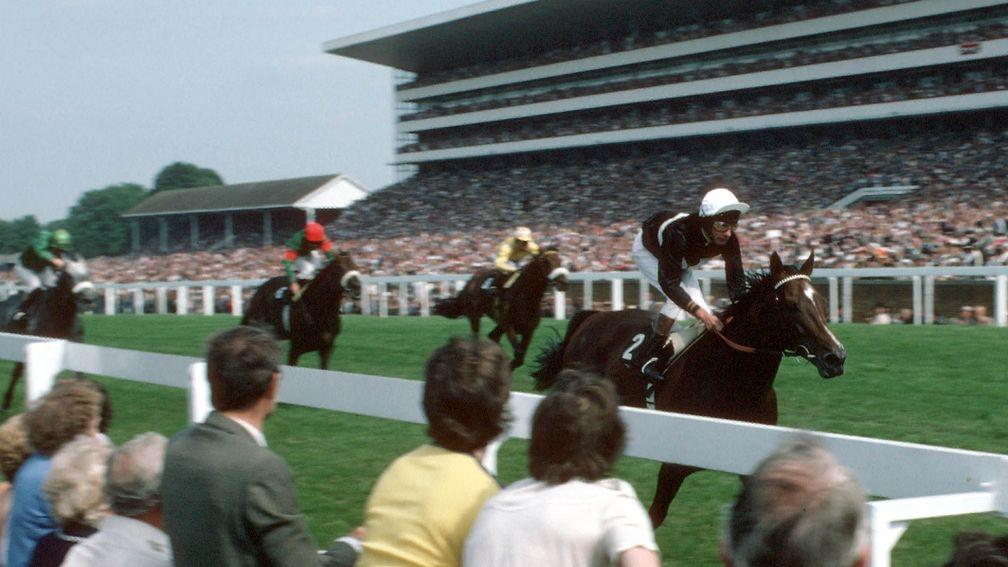
Piggott and Cecil also had the top juvenile, Diesis, and the jockey became champion for the 11th and final time.
He won the Derby for the ninth and last time on Teenoso in 1983, and as a four-year-old the Geoff Wragg-trained colt scored a decisive victory in the King George.
Since 1827 the record for the most victories by a jockey in the five British Classics had stood at 27 by Frank Buckle. Piggott equalled the record on Circus Plume in the 1984 Oaks and broke it on Commanche Run in the St Leger, having jocked off Luca Cumani's stable jockey Darrel McHargue.
Riding as a freelance in 1985, he took his domestic Classic score to 29 with victory in the 2,000 Guineas on Nijinsky's son Shadeed. In October, seven days before his 50th birthday, he retired in a blaze of publicity with success on Full Choke at Nottingham.
Piggott started his training career in 1986 at Eve Lodge stables, next door to his bungalow in Hamilton Road, Newmarket, and his promising start continued the following year with a Classic victory via Lady Bentley in the Oaks d'Italia.
When he was a boy, his mother had drummed into him the importance of being careful with money, and he grew up to be a miser who delighted in petty acts of meanness – but he crossed the line between greed and criminality.
His friend Peter O'Sullevan thought his constant wasting contributed to his behaviour, writing in his memoirs: "The austere regime further isolated him from his fellow men, promoted irritability and fostered the gunslinger's delusion of being above the law."
Customs and Excise investigated his finances and in January 1986 they raided his home in Newmarket, taking away many documents. The Inland Revenue became involved, and only when secrecy was no longer viable did he admit to his hidden bank accounts.
In December 1986 he was arrested, having failed to declare income of more than £3 million over a period of more than ten years. The trial, at Ipswich Crown Court, lasted only one day, October 23, 1987, as he pleaded guilty to all ten charges, most of them relating to tax evasion. He was sentenced to three years in prison.
He spent most time in Highpoint prison, ten miles from Newmarket, before being released in October 1988, having served a third of his sentence. He was stripped of the OBE he had been awarded in 1975, as is customary in such cases.
1990s: The second coming
At Vincent O'Brien's suggestion, Piggott made a comeback in October 1990. He rolled back the years with a dramatic victory in the Breeders' Cup Mile at Belmont Park on O'Brien's Royal Academy, adopting a frenzied drive as if he had never been away. This was nine days before his 55th birthday.
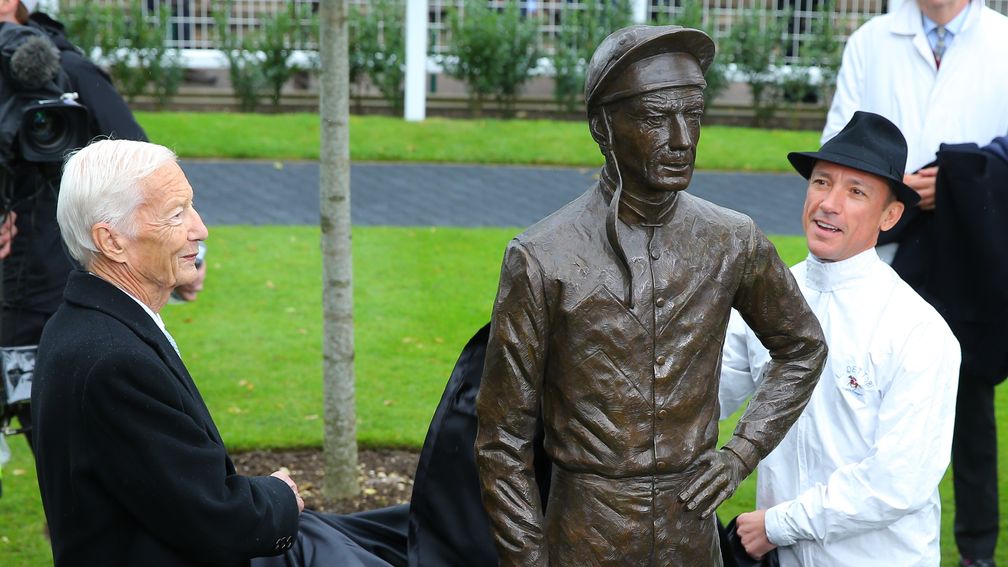
In 1992 he gained his 30th and last British Classic victory in the 2,000 Guineas on Robert Sangster's Rodrigo De Triano.
Anna Ludlow had become his assistant after his comeback, and the tabloids had a field day when their son Jamie was born in September 1993.
In Britain his final winner turned out to be Palacegate Jack at Haydock in October 1994, and his last race was the November Handicap at Doncaster on his 59th birthday.
Early in 1995 he rode abroad, and on his return home he eventually announced that he would not ride again. His 4,493 Flat wins ranked him second only to Sir Gordon Richards (4,870) among the winningmost jockeys in Britain, although Pat Eddery later surpassed him. He won about 5,300 races world-wide.
Piggott became the joint-breeder of champion two-year-old filly Superstar Leo, trained by his son-in-law William Haggas, who had married Maureen Piggott in 1989. The couple gave him two grandchildren, Mary-Anne and Sam.
His marriage had survived his affair with Anna Ludlow but in 2012, aged 76, he left the marital home to live in Switzerland with Barbara, the wife of ex-trainer Lord John FitzGerald.
As his name passed into legend his flaws were forgotten, and he became the elder statesman of British racing.
Do you have a favourite Lester Piggott story?
We're collating our readers' best stories about the great man and will publish a selection at a later date. If you would like to contribute, please email editor@racingpost.com with the subject 'Lester'.
Click here for a detailed infographic of Lester Piggott's remarkable achievements
Lester Piggott:
Lester Piggott, legendary jockey and nine-time Derby winner, dies aged 86
The remarkable facts and figures behind Lester Piggott's career
In his own words: 'It was quite a bad punishment, wasn't it? It was almost inhumane'
Lester Piggott Q&A: a brilliant interview with the record-breaking champion
Appreciation: 'His cut-throat mentality was unmatched in the history of the turf'
'He was my idol growing up' - Mick Kinane on his admiration for Lester Piggott
Aidan O'Brien: 'Incredible man' Lester Piggott left unbelievable mark on us all
Racecourse brilliance and quieter moments: Lester Piggott in photographs
'Lester went wrong way round a roundabout to pass me! No wonder he was champion'
Nine Derbys, 30 British Classics and winners worldwide - Lester by the numbers
Published on inNews
Last updated
- How to add Racing Post as a preferred news source in Google
- Moray Smith Live: put your questions to the pro punter for a special Christmas Q&A
- It's your LAST CHANCE to get 30% off Racing Post+ for a whole year - don't miss out on all our fantastic content!
- 'Absolute nonsense' to claim Haiti Couleurs was out of his depth in Betfair Chase
- Catterick: 'I loved him straight away' - hurdles debutant Indian River makes winning start for Adrian Keatley
- How to add Racing Post as a preferred news source in Google
- Moray Smith Live: put your questions to the pro punter for a special Christmas Q&A
- It's your LAST CHANCE to get 30% off Racing Post+ for a whole year - don't miss out on all our fantastic content!
- 'Absolute nonsense' to claim Haiti Couleurs was out of his depth in Betfair Chase
- Catterick: 'I loved him straight away' - hurdles debutant Indian River makes winning start for Adrian Keatley